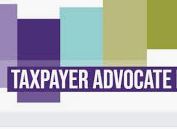
The Internal Revenue Code requires the National Taxpayer Advocate to submit two annual reports to the House Committee on Ways and Means and the Senate Committee on Finance. The National Taxpayer Advocate is required to submit these reports directly to the Committees without any prior review or comment from the Commissioner of Internal Revenue, the Secretary of the Treasury, or the Office of Management and Budget. The first report, due by June 30 of each year, must identify the objectives of the Office of the Taxpayer Advocate for the fiscal year beginning in that calendar year.
FY 2024 Objectives Report To Congress
PREFACE: The National Taxpayer Advocate’s Introductory Remarks
REVIEW OF THE 2023 FILING SEASON
TAS SYSTEMIC ADVOCACY OBJECTIVES
Introduction
- Protect Taxpayer Rights as the IRS Implements Its Strategic Operating Plan
- Protect Taxpayer Privacy and Ensure the IRS Does Not Disclose Taxpayer Information Without Consent
- Improve Correspondence Audit Processes, Taxpayer Participation, and Agreement and Default Rates
- Implement Systemic First Time Abatement But Allow Substitution of Reasonable Cause
- Reduce Burden on Taxpayers Applying for an Individual Taxpayer Identification Number
- Formalize 45-Day Response Time From All IRS Functions to Recommendations Made by the Taxpayer Advocacy Panel
- Eliminate Systemic Assessments and Offer a First Time Abatement Waiver for International Information Return Penalties
- Modernize IRS Paper Processing Procedures
- Continue to Propose Simplification of the Tax Code and IRS Procedures to Reduce Taxpayer Compliance Burden
- Improve IRS Hiring, Recruitment, and Training Strategies
- Improve Taxpayer Access to Telephone and Face-to-Face Assistance
- Increase Accessibility and Improve Functionality of Digital Services for Individual and Business Taxpayers and Tax Professionals
- Improve Tax Return Processing by Eliminating Barriers to E-Filing
- Improve IRS Transparency
- Identify Data to Support Minimum Competency Standards for Paid Return Preparers of Federal Tax Returns
- Improve the Staffing and Culture of the IRS Independent Office of Appeals
- Reduce Compliance Barriers for Overseas Taxpayers





























Recent Comments